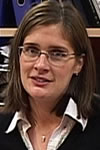Works on the technical design of new products, selecting materials, researching manufacturing processes, testing prototypes etc.
Work Environment
This occupation is typically found in the following Career Sector(s):
Videos & Interviews
Videos on the Web
- Design & Development Engineer- from: Youtube Search
Working Life
Design engineers begin each project by looking at a 'brief', (a set of instructions) which explains what the aim of the project is. A car manufacturer, for example, may want to increase sales of one of their cars by reducing fuel consumption or improving the look of a new model.
Design engineers are responsible for making sure the product meets the manufacturer's needs and is safe, efficient, reliable, and economical to produce. Before they prepare a design, engineers gather information by talking to other experts, reading engineering literature and looking at the results of test data on materials and processes.
Engineers use computer-aided design (CAD) techniques to produce a design on a visual display screen. The computer performs all the necessary calculations relating to the weight of parts and the loads they must bear.
The engineer can compare possible solutions by using drawings, calculations, and physical and computer models. Engineers work on models to check and measure the way a product works; they may have to modify their designs as a result. Design engineers work in teams alongside other engineers, technicians and production staff.
They may supervise and lead teams of design draughtspeople. They are also responsible for regular progress reports for project managers and clients.
Further Information
- Design Engineer- from: N.C.S. [UK]
- Product Designer- from: N.C.S. [UK]
Qualities - Design & Development Engineer
To be a design engineer, you must have an understanding of scientific principles and mathematical concepts. You need a creative approach to problem solving; you must be patient and willing to modify designs several times until you achieve exactly the right result. You must have good communication skills and be able to work well with others. You must also have a good understanding of manufacturing processes and construction skills. As well as being able to draw and interpret technical drawings and plans, you need computer skills to use computer-aided design programmes. The ability to work under pressure to meet tight deadlines is important. You need to be able to visualise ideas.
Interests - Design & Development Engineer
This occupation is typically suited for people with the following Career Interests:
Realist
Realists are usually interested in 'things' - such as buildings, mechanics, equipment, tools, electronics etc. Their primary focus is dealing with these - as in building, fixing, operating or designing them. Involvement in these areas leads to high manual skills, or a fine aptitude for practical design - as found in the various forms of engineering.
Realists like to find practical solutions to problems using tools, technology and skilled work. Realists usually prefer to be active in their work environment, often do most of their work alone, and enjoy taking decisive action with a minimum amount of discussion and paperwork.
Investigative
The Investigative person will usually find a particular area of science to be of interest. They are inclined toward intellectual and analytical activities and enjoy observation and theory. They may prefer thought to action, and enjoy the challenge of solving problems with sophiscticated technology. These types prefer mentally stimulating environments and often pay close attention to developments in their chosen field.
Creative
Creative people are drawn to careers and activities that enable them to take responsibility for the design, layout or sensory impact of something (visual, auditory etc). They may be atrracted to the traditional artistic pursuits such as painting, sculpture, singing, or music. Or they may show more interest in design activities, such as architecture, animation, or craft areas, such as pottery and ceramics.
Creative people use their personal understanding of people and the world they live in to guide their work. Creative people like to work in unstructured workplaces, enjoy taking risks and prefer a minimum of routine.
Entry / Progression - Design & Development Engineer
Design Engineers typically complete an appropriate engineering degree or equivalent qualification. Most engineering courses involve some element of design work. It is essential to explore course details to make sure the engineering course you chose is appropriate to the branch of engineering you want to follow.
Sample Education and Training Pathways
A number of courses are available throughout the country that focus on learning and skills that may be useful for this career. The examples and links below may guide you in your research.
Further Education (FET)
Further Education & Training (FET) Courses are delivered by local ETBs, ranging in duration from several weeks up to 20 months. Courses are designed to meet the labour market needs and often include a large element of work experience.
Example search terms include: engineering technology, engineering operations, manufacturing technician maintenance skills technology, CNC, computer numeric control operator.
Search for FET Courses
PLC Courses (FET)
PLC courses are full-time courses, one or two years duration, with awards at Level 5 and 6 on the NFQ. They are offered nationally in Schools and Colleges of Further Education.
Example search terms include: pre-apprenticeship engineering, pre-university engineering, engineering technology, product design, product design and manufacture.
Search for PLC Courses
Apprenticeships:
Apprenticeships are structured work-based training programs that combine on-the-job training with classroom instruction. They run from 2 – 4 years and are open to individuals of all ages, including school leavers, those seeking a career change, and existing employees who wish to upskill.
Examples: Engineering, Manufacturing, Design.
Search for Apprenticeships
Higher Education CAO (Undergraduate)
Higher Education courses at Levels 6 to 8 on the NFQ, delivered in Universities and Technological Universities & Institutes. Courses run from 2 – 5 years and places are allocated on a points-based system, processed by the Central Application Office.
Example search terms include: manufacturing, design, engineering, mechanical, agricultural, biomedical, energy, automation engineering, precision engineering and design, manufacturing engineering design.
Search for CAO Courses
Higher Education (Postgraduate)
Postgraduate courses are courses at Levels 9 and 10 on the NFQ and usually last 1 – 2 years full time, or longer if a PhD or part time. Entrants typically require an undergraduate award (Level 8).
Example search terms include: engineering, mechanical, manufacturing, biomedical engineering, research, product design, product design control, quality management.
Search for Postgraduate Courses
Professional Development
Professional development (CPD) courses are specialised training, formal education, or advanced professional learning that improves skills, professional knowledge, competency, and overall effectiveness in the professional world.
Engineers Ireland Depending on level of entry, Design Engineers can gain Chartered Engineer or Associate Engineer status. You can apply for these professional titles through Engineers Ireland after first gaining an accredited degree, diploma or certificate, followed by three or four years experience in the workplace. All professional titles are highly regarded by employers throughout industry.
Check the Useful Contacts tab on this page to see if there are any professional bodies listed who may provide training related to this career.
Pay & Salary - Design & Development Engineer
Salary Range (thousands per year)* €40k - €85k
Salaries vary based on employer, location, experience, duties, and role.
Data Source(s):
CPL / Morgan McKinley / Collins McNicolas/ Sigmar/ Osborne
Last Updated: July, 2024
Labour Market Updates - Design & Development Engineer
Note: The following information relates to occupations that include: Design and development engineers; Production and process engineers; Quality control and planning engineers; Quality assurance and regulatory professionals; Environmental health professionals.
This information has been derived from the Solas National Skills Bulletin (2023).
Employment grew strongly for this occupation between 2018 and 2021, although employment remained unchanged in the most recent time period. Almost three quarters were employed in industry. Despite the static employment levels in 2022, there was a significant increase in the number of employment permits issued between 2021 and 2022 (by 1,100), with the industrial sector accounting for half of the increase. Roles for which permits were issued included quality, process, and design engineers.
This occupation had the highest number of mentions of vacancies that were difficult to fill in the Recruitment Agency Survey, especially for quality control/assurance, compliance/regulatory and process engineering roles. Employers (through Skills for Growth and/or Spotlight on Skills) have cited roles in design engineering (with specific industry knowledge), quality control and production engineers as being difficult to fill. Demand continues to be strong for this occupation despite static employment levels and issues with recruiting suitably qualified/experienced candidates for these roles are likely to persist.
Useful Contacts - Design & Development Engineer
-
Engineers Ireland
- 22 Clyde Road, Ballsbridge Dublin 4
- (01) 665 1300
- Click Here






























